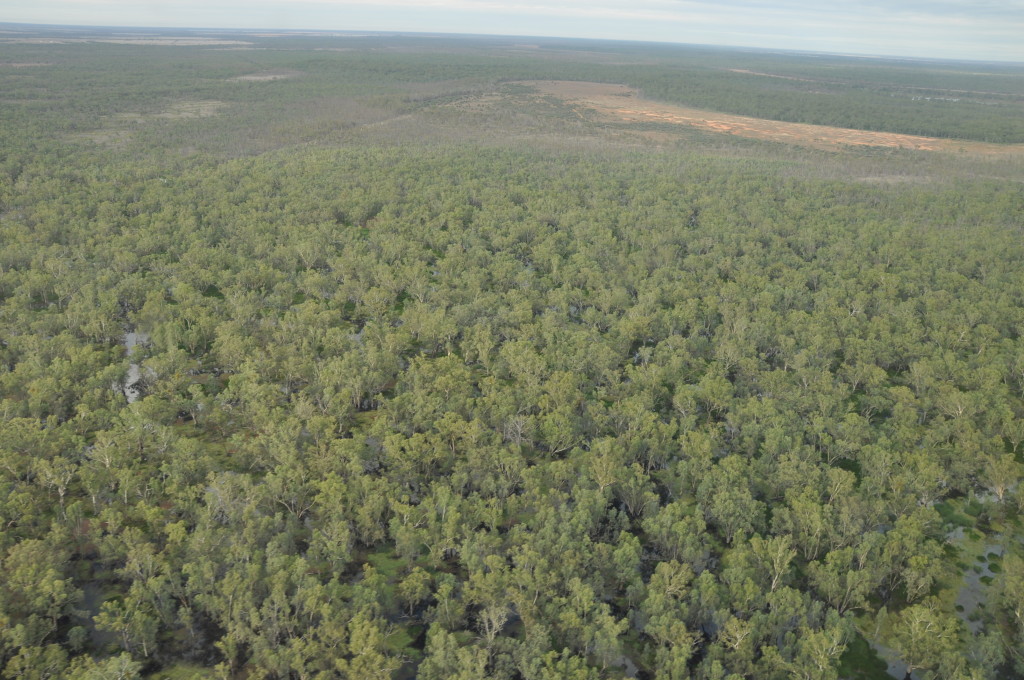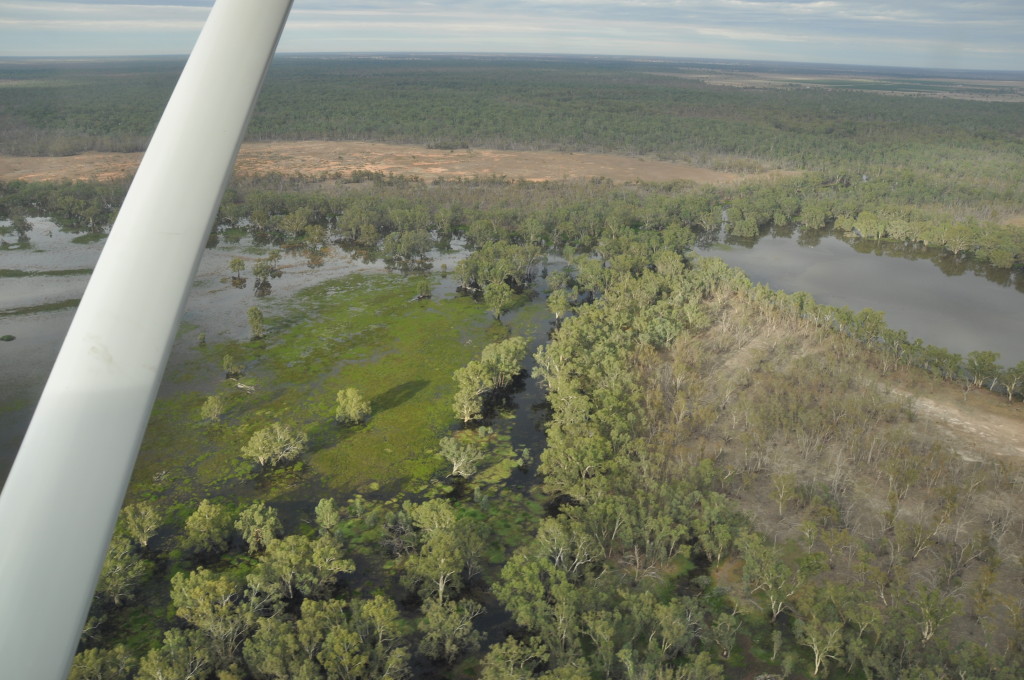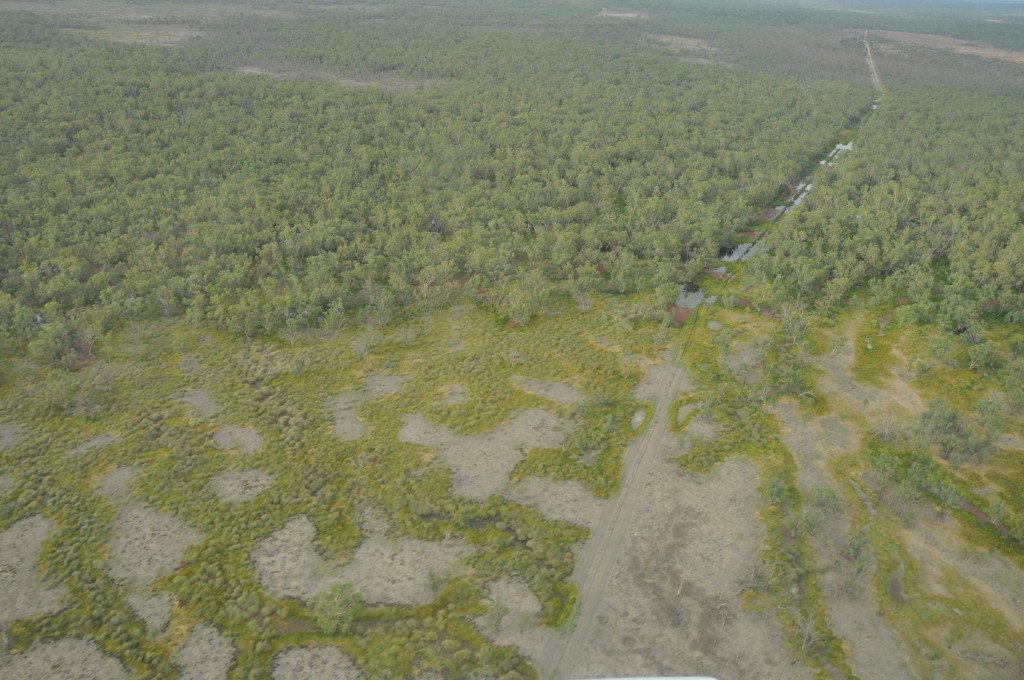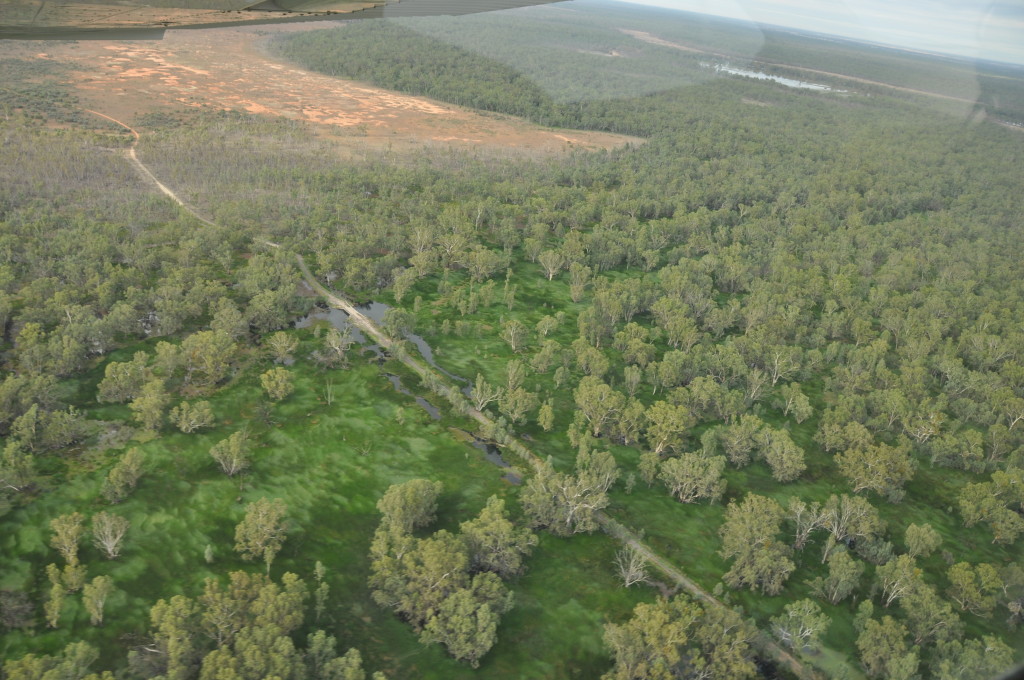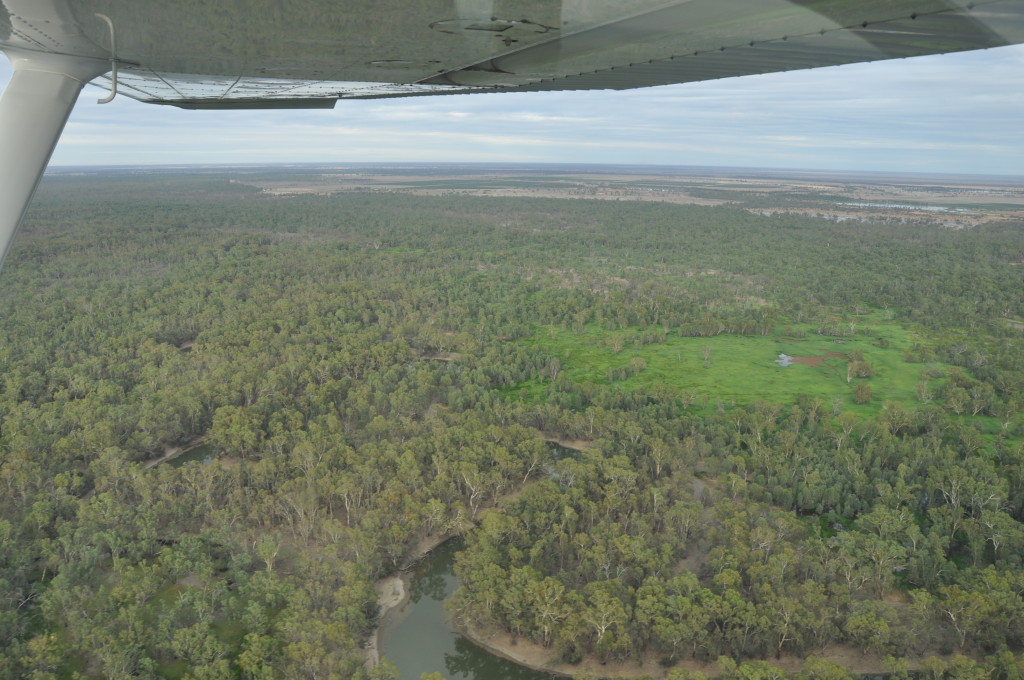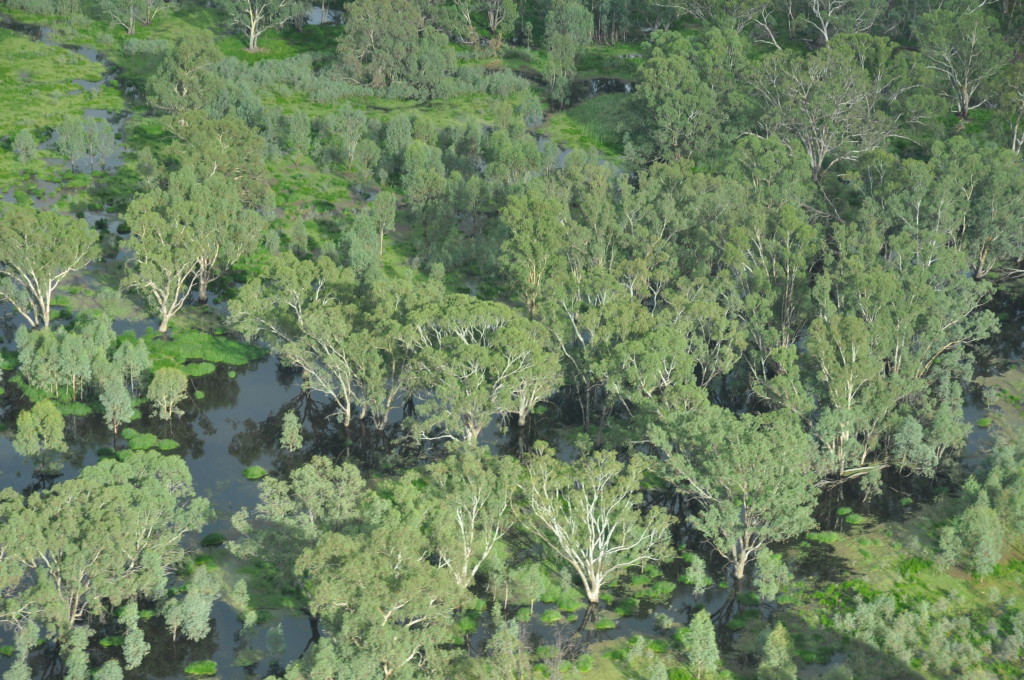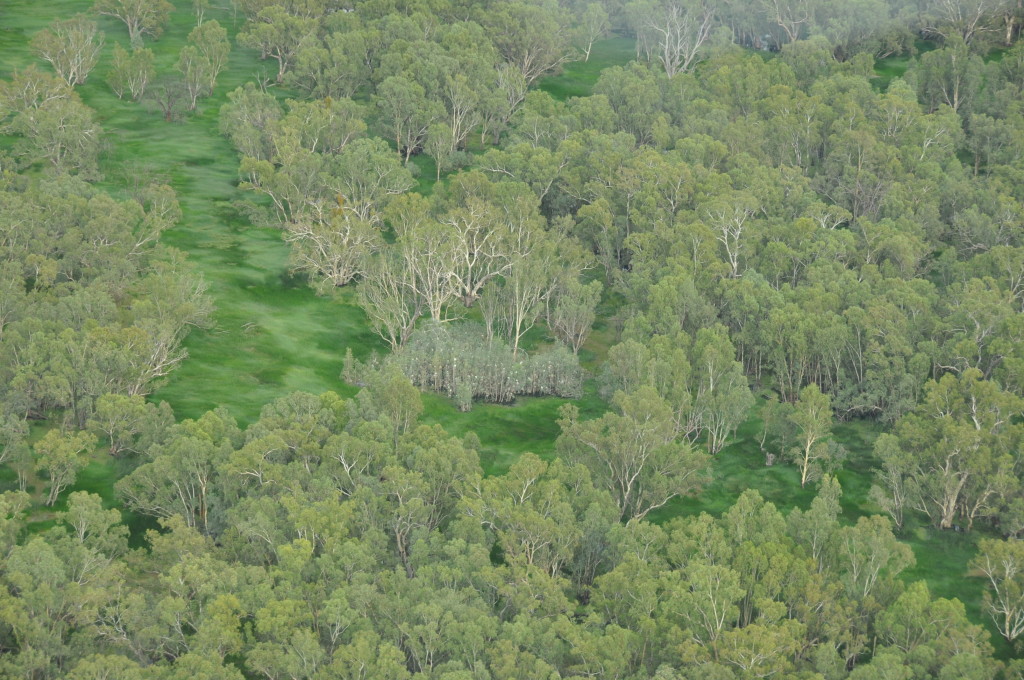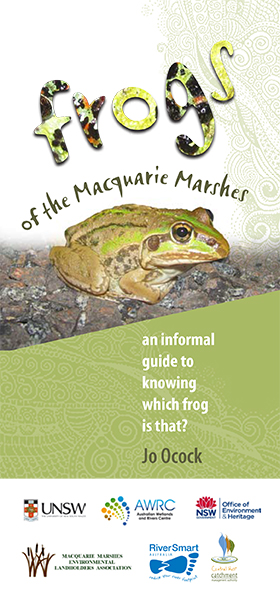Most of my fieldwork is done at walking pace. Actually, it is more like gumboot-encumbered, back-straining, mud-sucking, midge-swatting, can’t-take-your-eyes-from-the-ground-but-don’t-forget-to-look-at-the-trees-too, frog-searching pace. At night, with head torches. So, we’re not really setting a cracking pace. But you get to see the sunset, hear the frogs start to call, watch the birds fly back to roost, revel in the full moon. I’ve seen spiders eating fish, snakes eating frogs, beetles eating frogs, frogs eating frogs, and water rats eating something. I think it’s the best way to do field work.
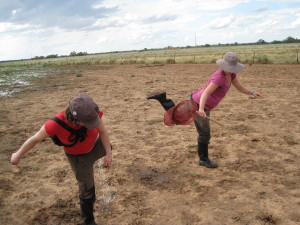
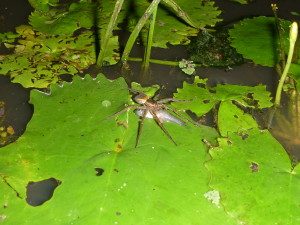
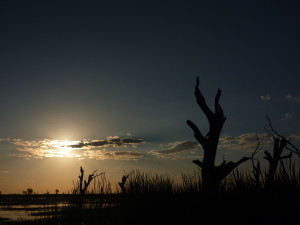
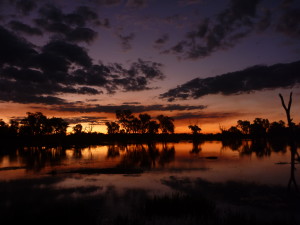
I recently got a taste of fieldwork conducted at a slightly faster pace. It was suspected that waterbirds had established a rookery (built nests and were raising young) in a particular area of the Lowbidgee wetlands in Yanga National Park. But these wetlands cover a large area and the rookery was potentially quite small, so when the funds are available the most efficient way to check if there is a rookery somewhere, is from the air. A two-hour, back and forth, low-level flight in a single engine Cessna to be precise.
It was awe-inspiring. While frog-walking pace lets you smell and see the fine details, the best way to appreciate the size and connectivity of these vast wetland systems is from above. It can be nice to change perspective sometimes. And we found that rookery, about 200 egrets and night herons using some young river red gum trees like apartment blocks! Check the photo at the end, all those white shapes through the trees in the middle.
